6) User Experience (UX)A seamless user experience is vital for retaining visitors and encouraging engagement. Websites with intuitive navigation, visually appealing layouts, and minimal intrusive elements like pop-ups provide value to users. Search engines reward sites with lower bounce rates and longer dwell times, viewing them as more relevant to users. Google’s systems want to spot signals that show expertise, authority, and trustworthiness. There’s another reason why other prominent websites linking to your content matter – it shows trustworthiness.
SEO tools – which ones do I need?
- In this SEO for Dummies guide, you’ll learn 13 tips that’ll ground you in the basics and give you access to all the SEO fundamentals.
- By implementing redirects and canonical tags correctly, you can ensure that search engines index and rank the correct version of your content, preventing duplicate content penalties.
- As you create content, build links, and grow your organic search traffic, your website’s domain authority will increase.
- Organic traffic brings a high prospect of turning visitors into buyers or members of your business.
- We examined the key components of SEO, counting watchwords, on-page and off-page optimisation, and technical considerations.
After a strategy session with Cadence, the issue was quickly spotted and resolved, leading to a rapid recovery in traffic. While SEO solutions aren’t always this straightforward, addressing technical SEO issues can sometimes yield immediate benefits. Compared to SEO, social media is more immediate and dynamic, requiring constant effort to stay relevant. Content posted on social media is quickly overshadowed by new posts, making it necessary to maintain a continual stream of updates to keep your audience engaged. This combination allows search engines to sift through massive amounts of information and bring the most relevant results to your fingertips in seconds. We all rely on search engines to find everything from quick answers to complex research.
They employ special bots, known as search crawlers, to inspect every corner of the web, collecting data and indexing web pages. When a user submits a search query, the search engine’s algorithm analyzes the indexed data and returns a list of relevant web pages, ranked by relevance and authority. This process ensures that users receive the most pertinent information quickly and efficiently. Since then, there have been hundreds of algorithm changes, driving marketers to constantly adapt their strategies.
Off-Page SEO Optimization
For instance, well-structured internal links on your pages make it easier for web crawlers to hop from one page to another. It allows them to explore your website in-depth and index more of your content. SEO also serves as a reliable and budget-friendly marketing strategy to help you drive traffic to a website and grow conversion rates.
It includes recognising the catchphrases and expressions that your target gathering of people is utilising to rummage around for data related to your industry. By conducting careful watchword investigations, you pick up essential experiences into client aim and can optimize your website’s substance in a like manner. Instruments like Google Catchphrase Organizer, SEMrush, and Moz Keyword Explorer can assist you in recognising important watchwords with tall look volumes and direct competition. Clients enter these words or expressions into look BHS Links motors when seeking detailed data. By focusing on pertinent watchwords, businesses can optimise their site substance to coordinate users’ look aim and increment their chances of appearing in look results.
What’s cool about this technique is that these are real searches people have made on Google. So you know these are keywords people are typing into the search engine you’re optimizing your content for. I’ll walk you through the steps to creating your own content that’s optimized for search. So you can improve your rankings and drive more traffic to your website. This immediately told us that if we created high quality content, there would be a strong chance our content would rank without needing any links. This is true despite the fact that some of the websites have a much higher Domain Rating (DR) than PageCloud.
On the other hand, black hat SEO uses questionable techniques to trick search engines into quickly raising a site’s ranking. These techniques may include keyword stuffing, cloaking, and link farming. While black hat SEO may work in the short term, it is not sustainable and can actually damage your website over time. Search engines are constantly updating their algorithms to detect and penalize black hat SEO practices.
Like most keyword tools, Sitechecker generates a list of terms based on the seed keyword that you type into it. Fortunately, there are a handful of free SEO tools that make finding popular keywords a breeze. I’m peeling back the layers on how to seamlessly weave SEO magic into your writing.
But instead of just posting a title and link, I included a quick summary of what we found in a Tweet. This tool scrapes Google’s top 30 results to uncover terms that show up most often in top-ranking content. Which is more than enough for Google to understand that my page is about that specific keyword.
Google’s rapid shift to AI Overviews means brands can’t waste anytime rethinking their SEO strategies. There are lots of schema types that apply to different types of businesses. You can learn more about schema & markup in our guide to schema for SEO. So how does Google determine which pages to surface in the search engine results page (SERP) for any given query? User experience considers the ease, smoothness, and accessibility of use for visitors to your site. It includes many factors, but the following are some of the most important.

